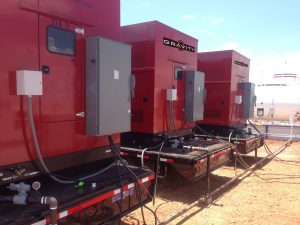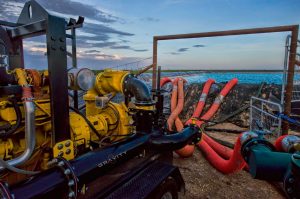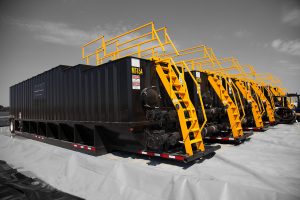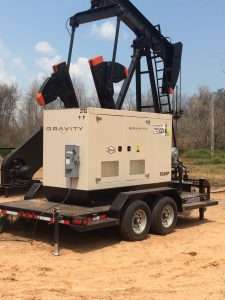 With Permian merger and acquisition activity on steroids in Q4 2023, consolidation of resources is becoming a necessary tool for staying on top of the game for E&P companies. In response, service companies are making changes of their own. For J&S Oilfield, the decision was to join forces with Fife Services, a company with which they already shared some ownership, to expand their footprint horizontally. Plus, to overcome supply chain issues, J&S expanded vertically, beginning to manufacture some items they could no longer easily get.
With Permian merger and acquisition activity on steroids in Q4 2023, consolidation of resources is becoming a necessary tool for staying on top of the game for E&P companies. In response, service companies are making changes of their own. For J&S Oilfield, the decision was to join forces with Fife Services, a company with which they already shared some ownership, to expand their footprint horizontally. Plus, to overcome supply chain issues, J&S expanded vertically, beginning to manufacture some items they could no longer easily get.
But Gravity Oilfield Services moved the opposite direction—shedding some non-core divisions in order to concentrate on the two services they do best, water midstream and power generation.
And for Ikon Science, worldwide provider of geopredictive and knowledge management software and service solutions, the strategy has been to continue honing their AI and ML neural networks to help producers save overhead. Their system helps producers drill faster and boost production by hitting the reservoir sweet spots more often. Ikon’s system cuts months off the typical time required for data processing.
J&S offers three main services, including trucking, surface/downhole equipment, and manufacturing. Of the three, trucking is most in demand, says Brad Fawcett, the company’s chief financial officer. “There’s always a need for trucking,” he said, alluding to the nationwide shortage of truck drivers. The company’s main truck cargo is produced water for small-to-mid-size producers who have not built out their own water midstream options, Fawcett noted.
Yet there are challenges with pricing, especially in light of M&A activity, he said, especially since COVID. As the oil patch began to recover from the shutdowns, he said most service companies “refined their focus onto cost savings, making the sector ultra-competitive. And now, even as the rig count rises, he sees cost consciousness continuing to rule the roost.
“One of the bad things that comes into play after a merger is, now they have to go into cost-savings mode because they have to pay off an $8 billion buyout.” So they’re asking service providers for even greater discounts.
Adapt or Die—Casting a Taller and Wider Shadow
Because of the supply chain challenges, Fawcett said the company decided to start manufacturing some of their own equipment. By removing the middle man, he said, they also realized some cost savings by buying the raw materials instead of the finished product. “That’s what you have to do to survive,” he added.
And expanding horizontally comes in relation to the M&As contracting the source of clients, he said. After an E&P merger “there’s one company needing vendors where there once were two.” For those now larger producers to become more efficient, Fawcett said, the new entity will eliminate duplication in service providers.
He explained, “Service companies as a whole, I think, to survive, are going to have to do better at merging and coming together, to work together.
Should a service company simply drop prices in order to compete, they should beware. “If you try to compete solely on price, you whittle it [the profit margin] to single digits, and very, very low single-digit margins. That’s not good for anybody.
“So I hope, as well as among E&Ps, there’ll be some positive mergers in the service industry,” he said, recommending the opportunities for synergy that come from a merger. It may mean survival, he added, because, “There has to be some movement—you adapt or die.”
Some producers have reduced costs by refusing to rehire people laid off in 2020-2021, which has created opportunities for service companies. That staffing shortfall means producers often now need service companies to fill those gaps—if the service companies can hire enough people to do the job. “But,” he noted, “if you don’t provide it, somebody else will.”
Partnership with Fife Services
For their own part, J&S moved to more fully integrate with Fife Services, with whom they already were affiliated to a degree. The J&S owners bought out Dan Fife in 2021, said Fawcett. Dan Fife had previously owned part of J&S. Before they buyout they had already operated out of the same office. Now it’s under unified ownership. Fife mainly offers roustabout services.
Gravity approached the post-COVID world differently. During the depths of the pandemic, said Chad Wolf VP of Power & Rental Operations, they had been forced to cut back some aspects of their biggest services, water transfer and power generation rentals, to keep the company as a whole afloat. Realizing that they needed to sustain their main businesses by reinstating their full range of services, Wolf explained, Gravity announced the sale of its fluids transportation business in February of 2022.
Since then they’ve overhauled their equipment and updated the truck fleet, bringing about the desired effect of boosting the equipment’s utilization and increasing prices, said Wolf. “That’s not to say it’s where we need to be in the end, but it is better.” He sees operators doing less leveraging of pricing, and looking instead to quality of service and uptime of equipment in deciding who to use for their projects. “Any boost in pricing and utilization is contingent on performance,” Wolf said.
Gravity has approached supply chain challenges differently than J&S, instead leveraging their vendor relationships for fuel, supplies, and engine parts, buying in bulk to limit the price increase shock and to allow them to pass at least some costs on to the marketplace. “Some are still happening,” Wolf said, “but we’ve been able to avoid some large, lumpy price increases, and maintain a consistent increase with those vendors, which has aligned with the pricing we’ve been able to set with our customers.”
The Power Market
Wolf said the company’s generation fleet is about half diesel powered and half natural gas powered, and usage depends on what fuel is available more than on ESG issues, although the latter is always welcome.
Natural gas use is decided on by its site availability and the cost of fuel. “A lot of the gas we run in our natgas generators is effectively royalty-only gas, that hasn’t been sold and bought back. And, there is an ESG component to it, and I think that’s more icing on the cake for a lot of our operators.” Using site gas has the added cost-effective component of eliminating thousands of miles of trucking diesel to the well pad, he observed.
The main concern for Gravity customers is reliability, defined by uptime.
 There is actually a third choice for powering oilfield pumps, which involves using the power grid. But running 300-amp lines to a pad in places like Loving County comes with a cost—and most of the time the power provider requires the producer to pay that. That’s because, Wolf explained, the need for that much power in a shale well is always short-lived. After a few months, most unconventional wells replace a large electric submersible pump drawing 300 amps with a rod pump needing only 50 amps. The electric provider, therefore, will never recoup their investment.
There is actually a third choice for powering oilfield pumps, which involves using the power grid. But running 300-amp lines to a pad in places like Loving County comes with a cost—and most of the time the power provider requires the producer to pay that. That’s because, Wolf explained, the need for that much power in a shale well is always short-lived. After a few months, most unconventional wells replace a large electric submersible pump drawing 300 amps with a rod pump needing only 50 amps. The electric provider, therefore, will never recoup their investment.
But neither does the producer in most cases. Realizing that, many of them stick with generator power as a lower-cost option over both the short and long term, Wolf said.
He spoke of one producer who, after paying for 300 amp lines, changed to a 50 amp rod pump the day the 300 amp wires were connected. Wolf said he was told the company could almost have drilled another well for the amount of money invested in power they no longer needed.
Reservoir Analysis Helps Avoid Geohazards
The Permian Basin has been drilled and researched for more than a hundred years—so what could remain for producers to understand about the subsurface after all that time and data collection?
New technology and analysis methods have an answer—we’ve only scratched the surface of the subsurface.
Here’s a Permian case in point for Ikon Science. In 2019 a large Permian operator acquired some high-resolution seismic data for an existing field—data they wanted to analyze in order to avoid geohazards (which would increase cost and drilling time) and to help them produce more oil from each well. The latter they would achieve by more accurately steering the wells into the producing zones, said Paritosh Bhatnagar, a technical geoscientist for Ikon Science.
Just having the high resolution seismic is a huge boost in insight, allowing analysts to see at 55 or 60 feet increments instead of 110 feet as before, Bhatnagar explained. “You are better able to delineate the rocks laterally, then decide where to drill the well to properly control frac heights.”
And with greater analysis, the benefits are even greater. In the noted case, the operator wanted to analyze a stratigraphic column, combining the seismic data with wireline data, core data, and other information from about 15 wells, in order to “make sure they were connecting the right data with the right formation,” Bhatnagar said. Processing this data took Ikon about five months due to its extreme complexity. Bhatnagar noted that most geomechanical projects, for wellbore stability, take only about one month to process.
What They Learned
Knowing that most shale wells access less than 10 percent of the reservoir’s reserves, one question was, “How can we increase that recovery factor moving forward? “Some of the analysis we did with the study can definitely help improve that rate,” he said.
Bhatnagar continued, “We were able to understand the mechanical properties of the rock, within our benchmark seismic conversion. That ultimately helps them to be in the zone to get to the right rocks. So they’re saving money drilling, then targeting the right oil shales for that improved recovery factor.”
To get there, it requires more than just understanding the seismic conversion volumes, he said. “You have to compare that to the right data, to your core pressure, and your mechanical measurements,” to verify the location. This massive amount of data took time to process, but the insights were extensive.
The Learning Process
Just as with human learning, machine learning (ML) uses neural networks, Bhatnagar said. That is, “A type of machine learning algorithm that, with a large number of wells, you can train on a specific classification. Then you have an outburst, and you correlate that to the original log to see how close it is to the predicted performance,” improving the formation mapping.
“Better mapping allows us to avoid non-targeted zones—a key takeaway. Clays are not good for frac height, it absorbs the frac.”
As stated, this information helps drillers reach more of the producing formation, boosting the well’s productivity. It also helps avoid downhole clays, which can absorb an inordinate amount of the frac compared to its production capabilities.
Bhatnagar said the producer plans to use this information for drilling new wells in 2024, with the exact benefits to be determined at that time.
By Paul Wiseman











